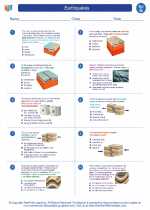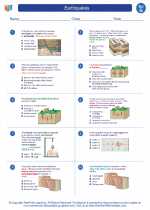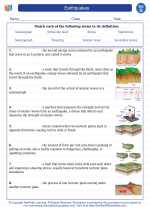Leeches: An Introduction
Leeches are segmented worms belonging to the phylum Annelida and subclass Hirudinea. They are found in freshwater, marine, and terrestrial environments, and are well-known for their blood-feeding habits. Leeches have been used in traditional medicine for bloodletting and are also studied for their potential medicinal properties.
Anatomy of Leeches
Leeches have a cylindrical body with a sucker at each end. The anterior sucker is used for feeding and the posterior sucker is used for locomotion. They have 34 body segments, each with a pair of small bristles called setae that aid in movement. Leeches also possess a well-developed digestive system and a nervous system, but lack a true respiratory or circulatory system.
Feeding Habits
Leeches are hematophagous, meaning they feed on the blood of other animals. They use their anterior sucker to attach to a host and then use their razor-sharp jaws to create a small incision in the skin. Once the blood begins to flow, leeches secrete an anticoagulant enzyme called hirudin to prevent the blood from clotting, allowing them to feed for an extended period of time.
Reproduction and Life Cycle
Leeches are hermaphroditic, meaning they have both male and female reproductive organs. During mating, leeches exchange sperm with each other, after which they lay eggs in cocoons. The eggs hatch into juvenile leeches, which undergo several molts before reaching sexual maturity. The life cycle of a leech typically involves a larval stage, followed by a juvenile stage, and finally adulthood.
Ecological Importance
Leeches play a crucial role in aquatic ecosystems by serving as decomposers and contributing to nutrient cycling. They also serve as indicators of ecosystem health, as their presence or absence can reflect changes in water quality and habitat conditions.
Medical and Scientific Applications
Leeches have been used in modern medicine for their anticoagulant properties, particularly in microsurgery and the reattachment of severed body parts. Additionally, their saliva contains compounds with potential therapeutic uses, such as anti-inflammatory and analgesic properties.
Study Guide: Leeches
- Describe the anatomy of a leech, including its body structure and specialized features.
- Explain the feeding habits of leeches, including the role of their anterior and posterior suckers, as well as the secretion of hirudin.
- Discuss the reproductive process and life cycle of leeches, including their hermaphroditic nature and the stages of development.
- Examine the ecological importance of leeches in aquatic ecosystems, highlighting their role as decomposers and indicators of ecosystem health.
- Investigate the medical and scientific applications of leeches, focusing on their use in modern medicine and the potential therapeutic properties of their saliva.
[Leeches] Related Worksheets and Study Guides:
.◂Science Worksheets and Study Guides Seventh Grade. Earthquakes

 Activity Lesson
Activity Lesson
 Worksheet/Answer key
Worksheet/Answer key
 Worksheet/Answer key
Worksheet/Answer key
 Worksheet/Answer key
Worksheet/Answer key
 Worksheet/Answer key
Worksheet/Answer key
 Worksheet/Answer key
Worksheet/Answer key
 Vocabulary/Answer key
Vocabulary/Answer key
 Vocabulary/Answer key
Vocabulary/Answer key
 Vocabulary/Answer key
Vocabulary/Answer key
 Vocabulary/Answer key
Vocabulary/Answer key
 Vocabulary/Answer key
Vocabulary/Answer key
 Vocabulary/Answer key
Vocabulary/Answer key
 Vocabulary/Answer key
Vocabulary/Answer key
